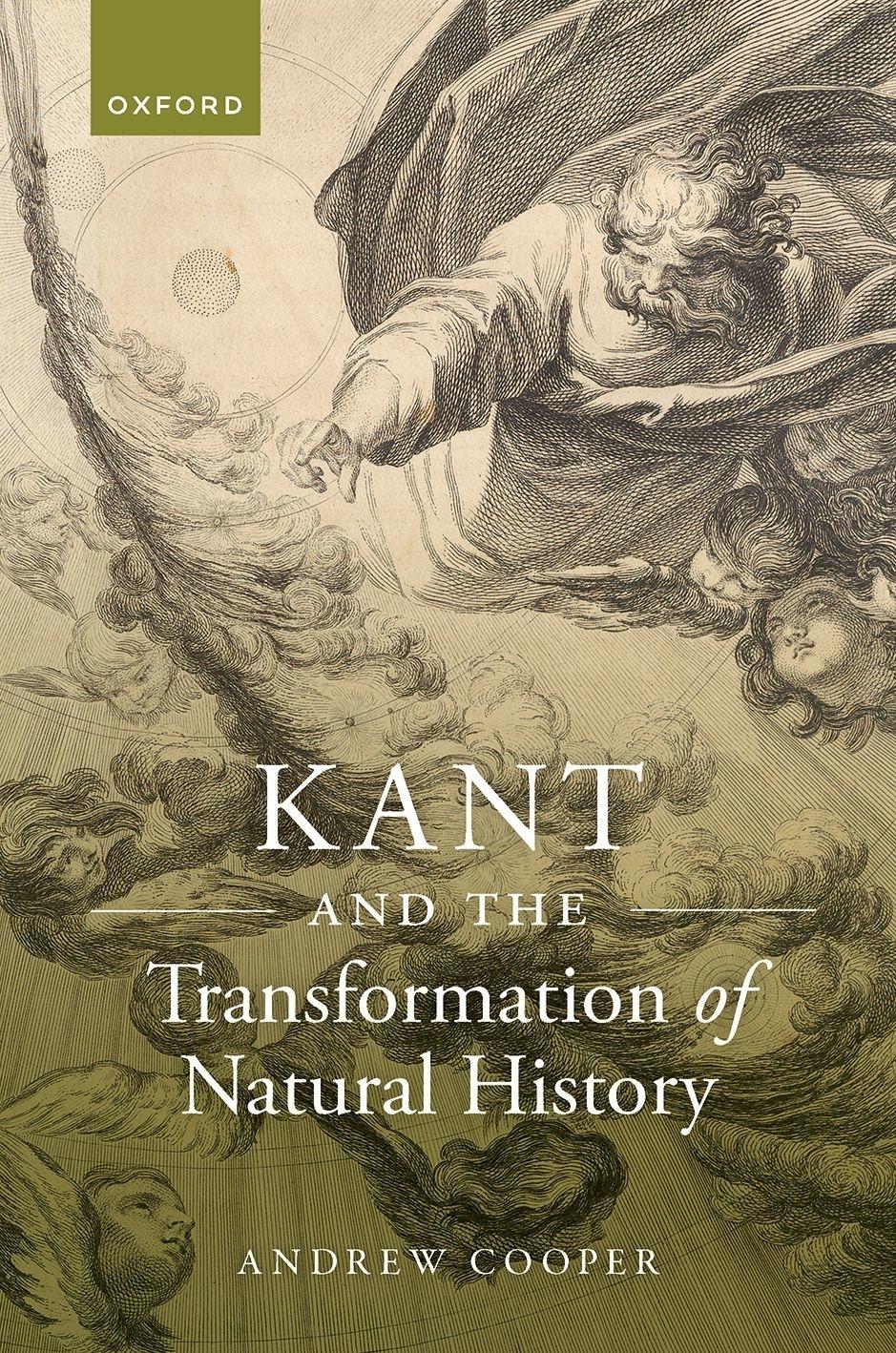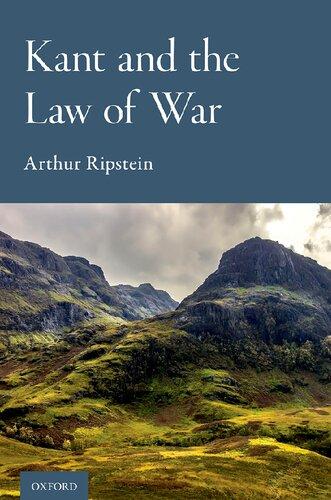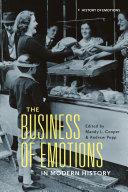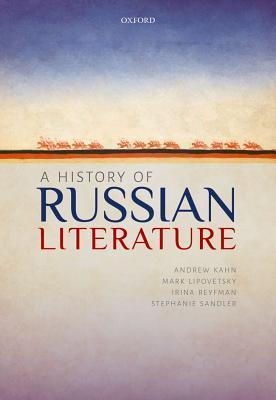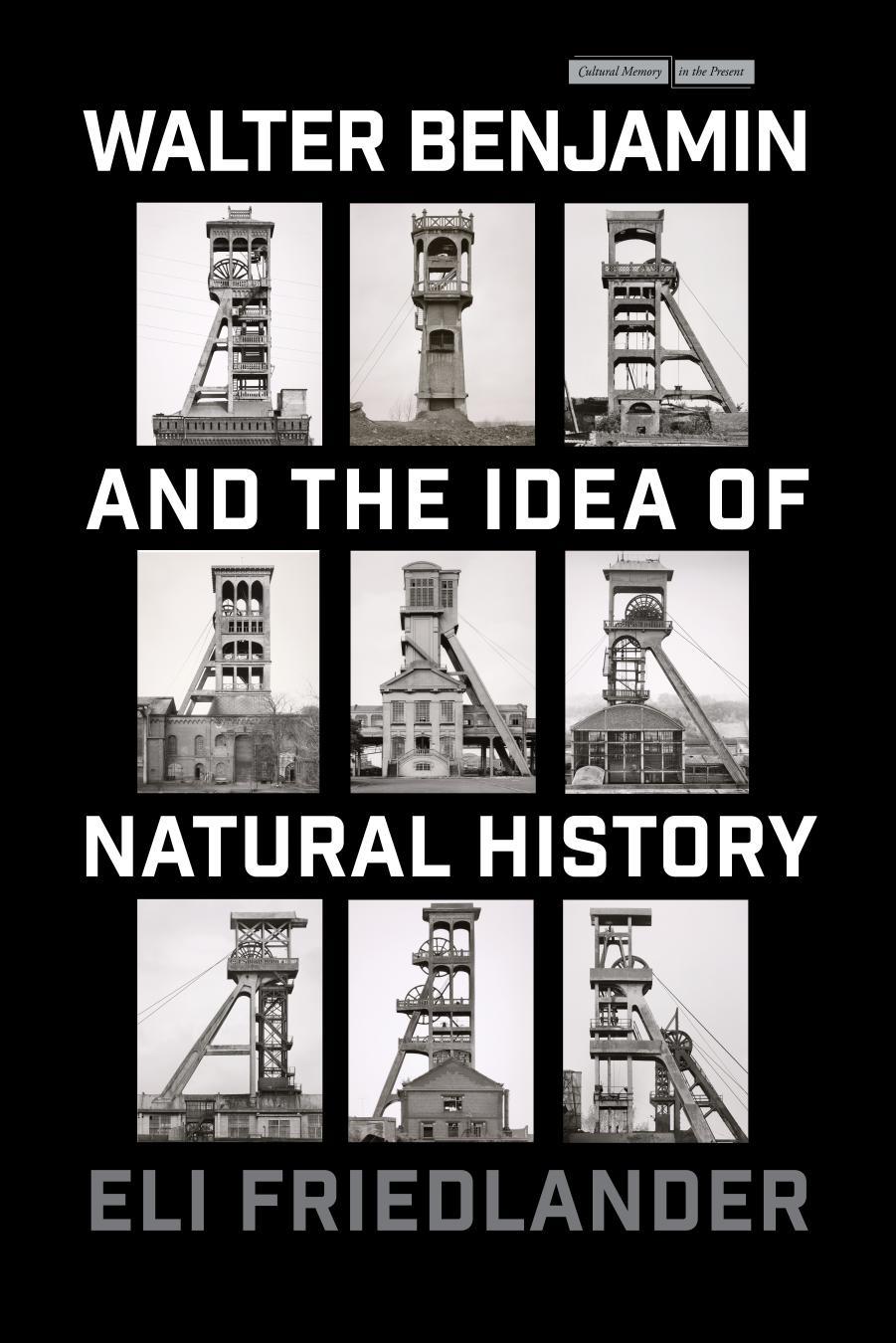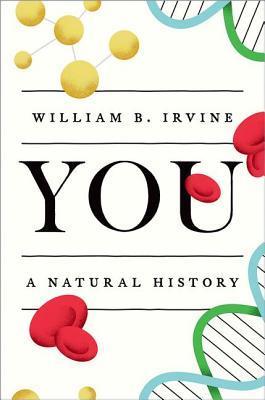Kant and the Transformation of Natural History
ANDREW COOPER
Great Clarendon Street, Oxford, OX2 6DP, United Kingdom
Oxford University Press is a department of the University of Oxford. It furthers the University’s objective of excellence in research, scholarship, and education by publishing worldwide. Oxford is a registered trade mark of Oxford University Press in the UK and in certain other countries
© Andrew Cooper 2023
The moral rights of the author have been asserted
All rights reserved. No part of this publication may be reproduced, stored in a retrieval system, or transmitted, in any form or by any means, without the prior permission in writing of Oxford University Press, or as expressly permitted by law, by licence or under terms agreed with the appropriate reprographics rights organization. Enquiries concerning reproduction outside the scope of the above should be sent to the Rights Department, Oxford University Press, at the address above
You must not circulate this work in any other form and you must impose this same condition on any acquirer
Published in the United States of America by Oxford University Press 198 Madison Avenue, New York, NY 10016, United States of America
British Library Cataloguing in Publication Data Data available
Library of Congress Control Number: 2023903275
ISBN 978–0–19–286978–4
ebook ISBN 978–0–19–269692–2
DOI: 10.1093/oso/9780192869784.001.0001
Printed and bound by CPI Group (UK) Ltd, Croydon, CR0 4YY
Links to third party websites are provided by Oxford in good faith and for information only. Oxford disclaims any responsibility for the materials contained in any third party website referenced in this work.
OceanofPDF.com
Preface
NoteonCitations
Introduction
I. THE TRANSFORMATION OF NATURAL HISTORY
Nature and Art
Charting TerraIncognita
II. KANT’S PHYSICAL SYSTEM OF NATURE
Universal Natural History
Physical Geography
III. CRITICAL PHILOSOPHY AND SCIENTIFIC METHOD
Seeking Order in Nature
From Natural Products to Organized Beings
The Method of Natural History
Conclusion
Bibliography Index
Preface
When we think of the revolutions that have changed the course of modern science, Copernicus’ heliocentric model of the heavens and Darwin’s theory of evolution by natural selection come to mind as two important examples. There is, however, another revolution that often goes overlooked, one that links the Copernican and Darwinian revolutions together: the addition of time to the frame in which explanations are required, sought, and justified in natural science. In this study, I examine this revolution as the transformationofnatural history, a seismic shift whereby scientific knowledge ceased to be understood as a logical practice of taxonomy and was reconceived as the physical explanation of things as a temporal process (the cover image, a plate taken from the Second Discours of Buffon’s Histoire Naturelle, reworks Michelangelo’s The Creation of Adam to offer a provocative illustration of the latter, physical conception of nature). The transformation of natural history was catalysed by new phenomena made available by the technologies that followed Galileo’s telescope, including the air pump, the microscope, the seafaring chronometer, and the dissection theatre. Against the backdrop of colonial expansion, natural philosophers on the continent were guaranteed a steady influx of new specimens into their gardens and display cabinets. On the frontier, the human body offered a pressing object of inquiry, as the global movement of military personnel, missionaries, indentured labourers, and chattel slaves raised new anxieties about the porosity of the body when relocated to foreign lands. These phenomena sparked an expansive programme of research into the mutability of material things in the system of nature—a programme that was framed by, and undertaken in the service of, colonial power. One of my aims in this
study is to explore the extent to which natural history’s transformation challenged—and reinforced—the prejudice of European superiority. There is still much work to be done to deconstruct the constellations of power at play in the Enlightenment, especially in the work of its canonical figures. I hope to contribute to this end by examining the writings and lectures of one philosopher whose life was thoroughly enmeshed in the tensions confronting natural historians in the eighteenth century: Immanuel Kant.
KantandtheTransformationofNaturalHistoryis the centrepiece of an Early Career Fellowship generously funded by the Leverhulme Trust in partnership with the Departments of Philosophy at University College London and the University of Warwick (ECF–2017–035). It has benefitted enormously from the help and encouragement of colleagues around the world, who have either read sections of the book or refined its contents through conversation. In no particular order, these include Ido Geiger, Robert Richards, Andy Jones, Angela Breitenbach, Alix Cohen, Yarran Hominh, Nathan Lyons, Christopher Mayes, Lorenzo Spagnesi, Huaping Lu-Adler, Sebastian Gardner, John Zammito, Peter Anstey, Ina Goy, Naomi Fisher, Peter McLaughlin, Rachel Zuckert, Eric Watkins, Clinton Tolley, Lucy Allais, Michael Hardimon, Phillip Sloan, Cinzia Ferrini, Thomas Khurana, and Sabina Vaccarino Bremner. I also thank David Barnes for incisive editorial suggestions, and my anonymous reviewers, whose perceptive criticisms were immensely helpful as I revised the text. Naturally, all remaining errors are my own.
This project benefitted immensely from the hospitality of several lively academic communities, including the Department of Philosophy at the University of California, San Diego, The Stevanovich Institute on the Formation of Knowledge at the University of Chicago, and the Master and Fellows of Corpus Christi College, Cambridge. Portions of the book have been greatly improved through early trials in various international forums, including The Sydney Centre for the Foundations of Science (Sydney University), The History of Philosophy Roundtable (University of California, San Diego), The Morris Fishbein Center for the History of Science and Medicine
(University of Chicago), The Chicago-area Consortium for German Philosophy (Loyola University), Kant’s Scots (University of Edinburgh / University of St Andrews), the Joint Session (Durham University), and the Centre for Post-Kantian Philosophy (Universität Potsdam).
I thank the staff members of several libraries for helpful advice and support, including The British Library, Niedersächsische Staatsund Universitätsbibliothek Göttingen, The UCL Library, The University of Chicago Library, The Geisel Library, Cambridge University Library, and The University of Warwick Library. I am grateful for Werner Stark’s momentous achievement to transcribe the student notes from Kant’s lectures on physical geography, which are scattered across the globe in private collections and public libraries. The transcriptions have recently been published as vols. 26.1, 26.2.1, and 26.2.2 of KantsgesammelteSchriften.
It has been a pleasure to work with Peter Momtchiloff, my editor at OUP, who believed in the project and masterfully guided it through the various stages to publication. Some of the research in this book draws on and develops ideas that have been published in earlier papers, and I am grateful to Elsevier for granting permission to reproduce them here. The account of Kant’s early cosmogony in Chapter 3 was first presented in “Kant’s Universal Conception of Natural History,” Studies in History and Philosophy of Science 79 (2020): 77–87. The examination of Kant’s lectures on physical geography in §§4.1 and 4.2 builds on “Living Natural Products in Kant’s Physical Geography,” Studies in History and Philosophy of Biological and Biomedical Sciences 78(1) (December 2019, online publication): Doi:10.1016/j.shpsc.2019.101191. And the account of hypotheses in §5.4 draws on research first presented in “Hypotheses in Kant’s Philosophy of Science,” StudiesinHistoryandPhilosophyof Science (May 2022, online publication): Doi:10.1016/j.shpsa.2022.04.007.
Finally, I am deeply indebted to the community at The Vicarage, Tufnell Park, including Alexandra, Michael, Buki, Pete, and Ed. Throughout my labours on this book, our experiments in hospitality have oriented me to the world with openness and joy.
Note on Citations
With two exceptions, citations of Kant’s works refer to the volume and page number of KantsgesammelteSchriften(AA), edited by the Königlich Preußischen Akademie der Wissenschaften, later the Deutschen Akademie der Wissenschaften zu Berlin (Walter de Gruyter (and predecessors), 1902–). Citations of Critique of Pure Reason refer to the pagination of the 1781 (A) and 1787 (B) editions. Citations of Hechsel Logic, which is not included in the Akademie Ausgabe, refer to the original pagination (reproduced by Meiner Verlag). Where available, I have used translations from the Cambridge University Press editions. Modifications are noted in the footnotes, except for the following: Kraftis translated consistently as force; Zweck as purpose; the classificatory terms Gattung, Art, and Stammas species, kind, and stem. For the student lecture notes that are unavailable in English, translations are my own. Citations to Kant’s works are given in-text, using the abbreviations listed below.
Citations to other texts are by page number, except in cases where the cited paragraph or chapter would be more useful. Unless otherwise noted, translations of non-English texts are my own.
Works Published during Kant’s Lifetime
Kritik der reinen Vernunft, Critique of Pure Reason, translated by Paul Guyer and Allan Wood (Cambridge: Cambridge University Press, 1999).
Anthropologie in pragmatischer Hinsicht (AA 7:117–333), Anthropology from a Pragmatic Point of View. In Anthropology,
History, and Education, edited by Gunter Zöller and Robert Louden, translated by Robert Louden (Cambridge: Cambridge University Press, 2007), 227–429.
Bestimmung des Begriffs einer Menschenrace (AA 8:89–106), “Determination of the Concept of a Human Race.” In Anthropology, History, and Education, edited by Günter Zöller and Robert Louden, translated by Holly Wilson and Gunter Zöller (Cambridge: Cambridge University Press, 2007), 145–59.
Der einzig mögliche Beweisgrund zu einer Demonstration des Daseins Gottes (AA 2:63–163), The Only Possible Argument in Support of a Demonstration of the Existence of God. In Theoretical Philosophy, 1755–1770, edited and translated by David Walford (Cambridge: Cambridge University Press, 1992), 107–201.
Beobachtungen über das Gefühl des Schönen und Erhabenen (AA 2:205–56), Observations on the Feeling of the Beautiful and the Sublime. In Anthropology, History, and Education, edited by Günter Zöller and Robert Louden, translated by Paul Guyer (Cambridge: Cambridge University Press, 2007), 18–62.
Entwurf undAnkündigung eines Collegii derphysischenGeographie (AA 2:1–12), “Plan and Announcement of a Series of Lectures on Physical Geography.” In Natural Science, edited by Eric Watkins, translated by Olaf Reinhardt (Cambridge: Cambridge University Press, 2012), 386–95.
GrundlegungzurMetaphysikderSitten(AA 4:385–463). Metaphysics of Morals, edited by Lara Denis, translated by Mary Gregor (Cambridge: Cambridge University Press, 2017).
GedankenvonderwahrenSchätzungderlebendigenKräfte(AA 1:1–181), Thoughts on the True Estimation ofLiving Forces. In Natural Science, edited by Eric Watkins, translated by Jeffrey Edwards and Martin Schönfeld (Cambridge: Cambridge University Press, 2012), 1–155.
IdeezueinerallgemeinenGeschichteinweltbürgerlicherAbsicht(AA 8:17–31), “Idea for a Universal History with a Cosmopolitan Aim.” In Anthropology, History, and Education, edited by Günter Zöller and
Robert Louden, translated by Allen W. Wood (Cambridge: Cambridge University Press, 2007), 107–20.
Kritik der praktischen Vernunft (AA 5:1–163), Critique of Practical Reason, translated by Mary Gregor (Cambridge: Cambridge University Press, 2015).
Kritik der Urteilskraft (AA 5:165–485), Critique of the Power of Judgment, translated by Paul Guyer (Cambridge: Cambridge University Press, 2000).
Logik (AA 9:1–150), JäscheLogic. In Lectures on Logic, edited and translated by J. Michael Young (Cambridge, Cambridge University Press, 1992), 521–642.
Muthmaßlicher Anfang der Menschengeschichte (AA 8:107–23), “Conjectural Beginning of Human History.” In Anthropology, History, and Education, edited by Gunter Zöller and Robert Louden, translated by Allan W. Wood (Cambridge: Cambridge University Press, 2007), 163–75.
Metaphysische Anfangsgründe der Naturwissenschaften (AA 4:465–565), Metaphysical Foundations of Natural Science, edited and translated by Michael Friedman (Cambridge: Cambridge University Press, 2004).
Demundisensibilisatqueintelligibilisforma etprincipiis(AA 2:385–419), OntheForm andPrinciplesoftheSensibleandtheIntelligible World [Inaugural Dissertation]. In Theoretical Philosophy, 1755–1770, edited and translated by David Walford (Cambridge: Cambridge University Press, 1992), 373–416.
Nachricht von der Einrichtung seiner Vorlesungen in dem Winterhalbenjahre von 1765–1766 (AA 2:303–314), “M. Immanuel Kant’s Announcement of the Programme of his Lectures for the Winter Semester 1765–1766.” In TheoreticalPhilosophy, 1755–1770, edited and translated by David Walford (Cambridge: Cambridge University Press, 1992), 287–300.
Allgemeine Naturgeschichte und Theorie des Himmels (AA 1:215–368), Universal Natural History and Theory of the Heavens. In
NaturalScience, edited by Eric Watkins, translated by Olaf Reinhardt (Cambridge: Cambridge University Press, 2012), 182–308.
Physische Geographie (AA 9:151–436), Physical Geography. In NaturalScience, edited by Eric Watkins, translated by Olaf Reinhardt (Cambridge: Cambridge University Press, 2012), 441–682.
Principiorumprimorumcognitionismetaphysicaenovadilucidatio(AA 1:385–416), ANewElucidationoftheFirstPrinciplesofMetaphysical Cognition. In Theoretical Philosophy, 1755–1770, edited and translated by David Walford (Cambridge: Cambridge University Press, 1992), 1–46.
Prolegomena zu einerjedenkünftigenMetaphysik (AA 4:253–383), Prolegomena to Any Future Metaphysics, edited and translated by Gary Hatfield (Cambridge: Cambridge University Press, 2004).
Recensionenvon J. G.HerdersIdeenzur PhilosophiederGeschichte der Menschheit (AA 8:43–106), “Reviews of Herder’s Ideas on the Philosophy of the History of Mankind.” In Anthropology, History, and Education, edited by Günter Zöller and Robert Louden, translated by Allen W. Wood (Cambridge: Cambridge University Press, 2007), 124–42.
Träume eines Geistersehers, erläutert durch die Träume der Metaphysik (AA 2:315–73), Dreams of a Spirit Seer Elucidated by Dreams of Metaphysics. In Theoretical Philosophy, 1755–1770, edited and translated by David Walford (Cambridge: Cambridge University Press, 1992), 301–60.
Überden GebrauchteleologischerPrincipien in der Philosophie (AA 8:157–84), “On the Use of Teleological Principles in Philosophy.” In Anthropology, History, and Education, edited by Gunter Zöller and Robert Louden, translated by Gunter Zöller (Cambridge: Cambridge University Press, 2007), 195–218.
ÜberdieVulkaneimMonde(AA 2: 67–76), “On the Volcanoes on the Moon.” In NaturalScience, edited by Eric Watkins, translated by Olaf Reinhardt (Cambridge: Cambridge University Press, 2012), 418–25.
Von den verschiedenen Racen der Menschen zur Ankündigung der VorlesungenderphysischenGeographieimSommerhalbenjahe1775
von ImmanuelKantderLog.undMet.ordentl.Prof. (AA 2:427–43 / Werke VI:3–26), “Of the Different Races of Human Beings to Announce the Lectures on Physical Geography of Immanuel Kant, Professor Ordinarius of Logic and Metaphysics.” In Kant and the Concept of Race, edited and translated by Jon Mikkelsen (Albany, NY: State University of New York Press, 2013), 41–54. VondenverschiedenenRacenderMenschen(AA 2:427–43), “Of the Different Races of Human Beings.” In Anthropology, History, and Education, edited by Günter Zöller and Robert Louden, translated by Holly Wilson and Gunter Zöller (Cambridge: Cambridge University Press, 2007), 82–97.
Nachlass
Briefe (AA 10–13), Correspondence, edited and translated by Arnulf Zweig (Cambridge: Cambridge University Press, 1999).
Erste Einleitung in dieKritikderUrteilskraft(AA 20:193–251), “First Introduction to the CritiqueofthePowerofJudgment.” In Critiqueof the Power of Judgment, translated by Paul Guyer (Cambridge: Cambridge University Press, 2000), 1–52.
Opus postumum (AA 21–2), Opus postumum, edited by Eckart Förster, translated by Eckart Förster and Michael Rosen (Cambridge: Cambridge University Press, 1993).
Vorlesungen über PhysischeGeographie, Ms Dohna. In Vorlesungen über die Physische Geographie, vol. 26.2.2 of Kant’s gesammelte Schriften, edited by Werner Stark (Berlin: Walter de Gruyter, 2020), 1117–43.
Vorlesungen über Physische Geographie, Ms Dönhoff. In Vorlesungen über die Physische Geographie, vol. 26.2.2 of Kant’s gesammelte Schriften, edited by Werner Stark (Berlin: Walter de Gruyter, 2020), 743–1092.
Vorlesungen über PhysischeGeographie, Ms Hesse. In Vorlesungen über die Physische Geographie, vol. 26.2.1 of Kant’s gesammelte Schriften, edited by Werner Stark (Berlin: Walter de Gruyter, 2020), 1–296.
Vorlesungen über Physische Geographie, Ms Holstein. In Vorlesungen über die Physische Geographie, vol. 26.1 of Kant’s gesammelte Schriften, edited by Werner Stark (Berlin: Walter de Gruyter, 2009), 7–320.
VorlesungenüberPhysischeGeographie,MsKaehler. In Vorlesungen über die Physische Geographie, vol. 26.2.1 of Kant’s gesammelte Schriften, edited by Werner Stark (Berlin: Walter de Gruyter, 2020), 297–616.
Logik Blomberg (AA 24:7–301), Blomberg Logic. In Lectures on Logic, edited and translated by J. Michael Young (Cambridge, Cambridge University Press, 1992), 5–250.
LogikDohna-Wundlacken(AA 24:676–784), Dohna-WunlackenLogic. In Lectures on Logic, edited and translated by J. Michael Young (Cambridge, Cambridge University Press, 1992), 431–520.
Logik Hechsel (Meiner Verlag, 269–500), HechselLogic. In Lectures on Logic, edited and translated by J. Michael Young (Cambridge, Cambridge University Press, 1992), 381–430.
Logik Vienna (AA 24:787–940), ViennaLogic. In Lectures on Logic, edited and translated by J. Michael Young (Cambridge, Cambridge University Press, 1992), 251–380.
Metaphysik Herder , 1762–1764. In Vorlesungen über Metaphysik, vols. 28.1 and 28.1.1 of Kant’s gesammelte Schriften, edited by Gerhard Lehmann (Berlin: Walter de Gruyter, 1968/70), 1–524, 525–987.
Metaphysik Mrongovius, 1782–1783. In Vorlesungen über Metaphysik, vol. 29.2 of Kant’s gesammelte Schriften, edited by Gerhard Lehmann (Berlin: Walter de Gruyter, 1983), 747–940.
OceanofPDF.com
It is clear that the cognition of natural things as they are now always leaves us desirous of the cognition of that which they once were and of the series of changes they underwent to arrive at each place in their present state. Natural history, which we still lack almost entirely, would teach us about the changes in the shape of the earth, likewise that of its creatures (plants and animals) that they have undergone through natural migrations and the resultant degeneration from the archetype of the stem species. It would presumably trace a great many of seemingly different kinds to races of the same species and would transform the sprawling school system of natural description into a physical system of the understanding.
Immanuel Kant, “Of the Different Races of Human Beings”
Each may well hope from our instauration that it claims nothing infinite, and nothing beyond what is mortal; for in truth it prescribes only the end of infinite errors, and this is a legitimate end.
Immanuel Kant, CritiqueofPureReason, citing Francis Bacon’s InstauratioMagna
OceanofPDF.com
Introduction
Immanuel Kant spent his life in awe of nature’s immense complexity and the potentially infinite number of material things, which exceeds anything we could expect in advance. He was captivated by the human capacity to orient ourselves in the face of such vast empirical diversity, and, by recognizing our finite standpoint within the causal process of nature, to seek affinities between objects, to craft empirical concepts that pick out their defining qualities, and to classify the variety of things in the system of nature. To this extent Erich Adickes is right to portray him as a Naturforscher: Kant denied that logical possibility can tell us what is really possible, and anchored scientific knowledge in what is actual.1 Nowhere is Kant’s admiration for the diversity of material things more obvious, and his fascination for the response it evokes in the human understanding more apparent, than in his extensive writings and lectures on natural history. While he was famously reluctant to leave his beloved Königsberg, Kant devoured the latest travel writings and natural histories pouring into Europe from the rapidly growing trade routes and the unbridled expansion of the colonial frontier. Over his lengthy career, he never ceased from lecturing on current debates in natural history, or from discerning what those debates reveal about human knowledge.
This book undertakes a contextual and systematic study of Kant’s account of natural history. It has two major aims. The first is to reconstruct Kant’s writings and lectures on classification within the methodological debates unfolding in the eighteenth century concerning the extension of Newtonian science from mathematical physics to the generation of material
things. While recent scholarship frames Kant’s work on natural history within the human origins debate unfolding in Prussian periodicals during the 1770s and 80s,2 or the development of a biological science at the close of the century,3 I argue that it must first be understood in the context of earlier attempts to reconceive of the logical categories genus, species, and variety as physical concepts that represent causal connections in a selfproducing, mechanical system if Kant’s significance in the history of science is to be fully appreciated.
Building on this contextual reconstruction, the second aim of this book is to present a new interpretation of the place of natural history in Kant’s theory of science, and to show how this interpretation can enhance our understanding of the difficult and sometimes perplexing account of reason’s regulative use in his critical philosophy. Scholars generally accept that while Kant’s early work advanced a radical, explanatory conception of natural history (Naturgeschichte) in the vein of Georges-Louis Leclerc Comte de Buffon’s Histoire naturelle (1749), his critical turn in the 1770s and 80s staged a “historical retreat” to something much closer to the descriptive project (Naturbeschreibung) presented in Carl Linnaeus’ Systema naturae (1735).4 In contrast, I argue that while Kant’s critical philosophy separates natural history from proper science, it does not follow that natural history is limited to a logical procedure of classification. Drawing from both Kant’s writings on natural history and his critical epistemology, I contend that Kant aimed to present and surpass a dialectic between the logical and physical conceptions of the natural system represented by the Linnaean and Buffonian schools of taxonomy, which, in his view, continued to stifle the progress of natural history in the late eighteenth century. Kant’s transcendental vindication of Newtonian mechanics demonstrated that natural historians are required to judge the generation of material things in accordance with mechanical laws and provides the standard of demonstration to which they must aspire. It is this requirement
and standard of demonstration that enabled him to discern the problem that living material things pose to the historian of nature, for such things require the introduction of final causes into the field of research if the mechanical ideal of explanation is to be applied to their function and form. Kant’s attempt to resolve the problem methodologically, and the historical significance of his solution, will be the focus of this study.
Experimental and Historical Science
The motivation behind this book lies in the fact that, despite the recent flood of research on the experimental and historical sciences in Kant’s philosophy, commentators continue to hold a comparatively negative view of the place of natural history in his system of natural science.5 Previous scholarship on Kant’s theory of natural science focused on the constructive parts of Critique of Pure Reason, including the Transcendental Aesthetic and Analytic, and the Metaphysical Foundations of Natural Science.6 Over the past two decades, however, scholars have developed a broader conception of Kantian science in which the experimental and historical sciences participate in science as such.7 This development has led to groundbreaking work on previously overlooked themes in Kant’s writings and lectures, including his novel conception of experimental science,8 his pioneering work on anthropology,9 and his necessitarian account of empirical laws.10 Moreover, it has demonstrated how these neglected aspects of Kant’s writings and lectures help us to better understand his critical philosophy.11 When it comes to natural history, however, scholars tend to revert to the older and more restrictive conception of Kantian science.12 John Zammito speaks for many commentators when he argues that “Critique ofJudgment (1790) essentially proposed the reduction of life science to a kind of pre-scientific descriptivism, doomed neverto
attain authentic scientificity.”13 This interpretation was initially proposed in opposition to an optimistic reading of Kant’s influence in the development of biology, in which scholars argued that Kant’s transcendental account of organic structure anticipated Darwin’s comparative anatomy.14 To quell the recurring image of Kant as a proto-Darwinian biologist, critics point to the schema of natural science presented in Metaphysical Foundations, in which natural history is supposedly denied the status of a “proper natural science” and classified instead under the “historical doctrine of nature” (MAN 4:468). In contrast to proper natural science, which “treats its object wholly according to a priori principles,” the historical doctrine of nature begins with experience and works towards the “systematic presentation of natural things at various times and places” (MAN 4:468). “Systematic” is taken to refer to the logical ordering of cognitions, disconnected from the apodictic system of natural laws.15 Several commentators have gone as far as to claim that Kant’s strict view of proper science was crafted to curb the development of a science of life, ensuring that organic form is metaphysically distinct from the material dynamics of nature.16
This negative take on Kant’s account of natural history is compounded by the fact that his writings and lectures on the subject confront us with a dimension of his work that has recently caused a great deal of discomfort to Kant scholars: Kant’s concept of race, and, more pointedly, his racism.17 Kant argued that a physical conception of the natural system requires a new set of class concepts that capture causal connections between extended things through time and in space. While race is a general classificatory concept that refers to a physical line of descent in which members of a common species have, in response to changes in environment, altered in form, his most sophisticated treatment occurs in the context of a public debate concerning human origins in the 1770s and 80s. In a series of public essays dubbed his Racenschriften, Kant deploys the framework of his critical philosophy to define skin colour as the primary marker of a human race, and illustrates a fourfold taxonomy with pernicious claims about the enduring moral and
temperamental characteristics of non-white races.18 While scholars formerly passed over Kant’s racism as an unfortunate product of its time,19 new research pioneered by Emmanuel Eze, Charles Mills, and Robert Bernasconi contends that Kant was in fact the pioneer of a “scientific” conception of race that assisted white Europeans to clothe their felt sense of cultural superiority in the garb of Enlightened knowledge.20 Thus framed, Kant’s theory of race is not —as he states in the 1775 course announcement to his lectures on physical geography a mere “game” played alongside the “deep inquiry” of philosophy (VvRM75 2:429/6:3).21 It both anticipates and is enabled by his critical project, which establishes the conditions of scientificity. More seriously, it threatens to undermine the universal moral and political theory Kant developed during the 1780s, for his claim that certain races have acquired temperamental profiles that are unsuited to industry and culture entails that members of those races do not merit full consideration as moral persons.22 Given the weight of this threat, it would surely be good news to Kant scholars if his account of natural history were notscientific.23
While united by a negative take on Kant’s account of natural history, the existing literature is divided. Scholars working on the history of biology tend to argue that Kant denied natural history the status of a science. Those working on his concept of race tend to claim that his physical system of nature pioneers a distinctly scientific natural history. Noting this predicament, Phillip Sloan contends that we are yet to fully appreciate the connection between Kant’s classificatory categories and the regulative principles prescribed by reason in the first and third Critiques. Further work is needed “before we can assess the full importance of the race treatises for Kant’s larger project.”24
With this need in mind, my approach in this study is to investigate Kant’s writings and lectures on natural history in the context of his broader philosophical development. My central claim is that the relation between Kant’s general theory of natural science and his particular account of natural history has been misunderstood. To drive a wedge between natural history and natural science, or to
conflate the two entirely, is to misinterpret how his theory of science informs the particular domains of research that fall under it. In this study, I hope to shift the parameters of debate by drawing scholarship on Kant’s account of natural history into conversation with recent work on his broader conception of science. The debate’s current framing, I argue, does not sufficiently contextualize Kant’s account of scientific knowledge within the contested landscape of Newtonian science, leading scholars on both sides to overlook his decisive contribution to one of the most significant shifts in eighteenth-century natural philosophy: the inclusion of time as the methodological frame in which explanations are required, sought after, and justified in natural history.25 Kant’s critical reflection on the method of classification can be viewed as a culminating moment in what I term the transformation of natural history, a seismic shift occurring in eighteenth-century philosophy whereby natural history ceased to be understood as the logical practice of classification and was reconceived as the presentation of a physical process. In the midst of the epistemic and metaphysical problems raised by this transformation, Kant aspired to determine the scientific character of historical claims. His answer had significant implications for his critical account of reason’s regulative use, I claim, and raises a challenge for the logic of historical reasoning today.
An upshot of this claim is that Kant’s concept of race is indeed part of a scientific conception of natural history. While the moral and political implications of Kant’s race concept lie beyond the scope of this study, I aim to show that his theory of science encompasses a broader set of concepts and laws than those that can be established with certainty and completeness. Kant’s broad conception of science, I contend, entails that his opinions about racial characteristics are contestable, prone to error, and subject to ongoing revision. This by no means saves Kant from the charge of racism. Indeed, it will enable us to better discern the workings of racism in the formation of his opinions. What it does do, however, is loosen the connection between Kant’s racism and his theory of natural science (though it will not entirely disconnect them). Kant’s account of empirical
knowledge replaces the natural historian’s hope that a logical system will somehow converge with nature’s pre-established order with a procedure by which historical claims can be genuinely contested. Opinions—including Kant’s opinions about racial characteristics—are “scientific” to the extent that they can be evaluated against (a) possible experience (synthetic a priori knowledge), (b) actual experience (the available evidence), and (c) their adequacy to explain the given consequents (see Chapter 5). By shifting historical knowledge from the frame of convergence to an intersubjective sphere in which claims are contested against a standard of communicability, Kant’s method invites his readers to critically examine the reasoning found in his historical texts. I argue that when judged against this standard, his opinions about racial characteristics lack the justification required to merit the positive epistemic attitude he adopts towards them, revealing several of his failings as a Naturforscher. To understand Kant’s misplaced credence, I follow Huaping Lu-Adler’s contention that we should neither elevate Kant as an irreproachable figure in the history of philosophy nor to look down on him on account of his racist views. The challenge of reading Kant today is rather to examine his work within its historical context and ask “whether he still has something worthwhile to offer.”26 My hope is that this approach will aid us to gain a clearer grasp of both the power and the limitations of Kant’s theory of science.
Chapter Overview
I have written this book with two audiences in mind. It is first of all a work of Kant scholarship, and aspires to contribute to the growing body of literature on the experimental and historical sciences in Kant’s philosophy. However, it does so by situating his account of natural history within the broader transformation considered in this study, and thus also seeks to extend the growing body of work on the role of Newtonianism in the early development of biology.27 The dual focus of the study may, of course, fail to satisfy readers whose interest lies solely in one of these bodies of work. Yet my aim is to show that a constructive dialogue between Kant scholarship and the history of science can raise provocative questions for scholars working in both fields. The conviction guiding this study is that our understanding of Kant’s account of scientific knowledge can be enhanced by a broader investigation of the contribution he attempted to make to natural history’s transformation. As recent work by John Zammito and Joan Steigerwald has shown, this transformation did not occur as a discontinuous snap in the history of science, as if a developmental conception of nature could suddenly replace a static, logical schema of natural history.28 For the established community of natural philosophers to accept a new programme of research that investigates natural objects as products of a physical process, a deep epistemological and metaphysical shift would have to occur.29 In terms of epistemology, it would require a change in the foundation of empirical knowledge that could overcome the scepticism held by natural philosophers in regards to our knowledge of processes that lie beyond the reach of experience, such as changes undergone in the earth’s history. This change would have to permit certain forms of speculative reasoning about events that occurred long ago, and define a new standard of epistemic justification for historical claims. In terms of metaphysics, it would
require the integration of the formative principles of organic development into the natural order, such that living beings could be understood as products of natural forces. Thus conceived, the fit between organic function and environment would no longer be understood according to the causality of a designer but rather as the consequence of a developmental process that occurred over a long period of time, such that living things are considered as products formed in dynamic relation to the broader changes undergone in the earth’s history, including geophysical morphology, climactic variation, and the activities of other living beings.
In Part I of the study, I argue that the key to this epistemological and metaphysical shift lies in the extension of Newtonian science from the movement of material bodies to the generation of natural products, thereby broadening the scope of natural philosophy to include geology, geography, botany, and zoology. I begin in Chapter 1 by arguing that the intensive practice of natural history during the Renaissance raised a problem for the Aristotelean tradition of natural interpretation taught in the schools, for it became increasingly apparent that the properties used to classify individuals under a group are, at least in part, arbitrarily selected by the student of nature. I characterize this problem in terms of a gap that opened between the order of names and the order of things. Starting with Francis Bacon’s attempt to replace Aristotle’s Organon with a new method for interpreting nature, I show how the experimental turn in natural philosophy placed natural history at the foundation of a new hierarchy of learning. I explore the implications of this turn in the following generation of British natural philosophers, including Robert Boyle, Isaac Newton, and John Locke, who drew from Bacon’s Novum organum to separate two kinds of classificatory project: the presentation of the natural system, which captures essential divisions between natural things, and the construction of an artificial system, which arranges the manifold of nature according to human interests. I conclude with Carl Linnaeus’ Systema naturae, which proposes a method by which artificial classification can track natural boundaries.
In Chapter 2, I argue that the epistemological and metaphysical changes required to establish a physical conception of the natural system, understood as a presentation of the changes undergone by nature through time, were made possible by the extension of Newtonian science to events and processes that are not strictly amenable to mathematical demonstration. If Newtonian science upholds Newton’s official claim that the possibility of material motion is unknown, then its explanatory power lies simply in the ability to describe the movements of material bodies on a geometrical plane according to attractive and repulsive forces. On this “mechanical” interpretation of Newtonianism, such as that found in Stephen Hales’ plant physiology, the natural philosopher applies the Newtonian forces to the unfolding of natural products understood as preexisting machines. Yet if Newtonian science could move beyond Newton’s epistemic reservations and vindicate metaphysical knowledge of fundamental forces, then material bodies would not simply follow Newtonian laws; they would also be constituted by them. Generation—what Aristotle understood as motion towards form—could thus be studied as a physical process.30 On this “materialist” interpretation of Newtonianism, pioneered by Émilie du Châtelet, Pierre Louis Maupertuis, and Georges Buffon, the possibility of the mechanical system lies in nature’s material conditions. Theoretically at least, the initial state of Newtonian mechanics could be explained by attractive and repulsive forces, meaning that the order of nature could be studied as a physical achievement. Thus understood, a natural history would not simply describe and catalogue the manifold of natural objects according to logical affinities, but also reconstruct the physical connections between extended things in space and time. Yet several links in this universal conception of natural history, including the original formation of organized beings and variation within species, continued to resist explanation, leading the materialist Newtonians to fill the gaps with speculative hypotheses. Sceptical of such hypotheses, Albrecht von Haller developed an “analogical” interpretation of Newtonianism, according to which the natural
philosopher examines recalcitrant phenomena through an analogy with Newton’s deduction of the law of universal gravitation without needing to speculate about their cause.
In Parts II and III, I argue that in both his early and his mature work, Kant aspired to make a decisive contribution to the transformation of natural history. In Part II, I begin by providing evidence to show that Kant’s early account of natural history extends the materialist interpretation of Newton championed by Maupertuis at the Berlin Academy. Scholars tend to interpret Kant’s Newtonianism in direct relation to Newton’s Principia, overlooking the developments in Newtonian science that occurred in the first half of the eighteenth century.31 This has led to considerable misunderstanding of Kant’s relation to Newton, for it remains unclear why he would frame his early defence of Newtonian physics in the form of a natural history. In Chapter 3, I argue that Kant’s Universal Natural History (1755) extends Buffon’s physical account of knowledge, in which a universal natural history recounts the generation of the entire system of natural phenomena from just a few natural laws, thereby reducing the contingent appearance of design to material necessity. Thus conceived, nature is no longer a divinely ordered system of bodies on a geometrical plane but a selfactualizing process that generates its own spatial and temporal conditions. History is no longer a description of natural order but a narrative of the changes that explain nature’s present state.
Kant’s extension of materialism clarified the problem that living natural products pose to a universal natural history. Living natural products can only be examined as developing through time if natural historians assume the operation of a generative force by which members of a species adapt to changes in climate, landscape, and other living beings. In Chapter 4, I consider a tension emerging in the student notes from Kant’s lectures on physical geography between living natural products and the mechanical-teleological system presented in UniversalNaturalHistory. While Kant structured his physical geography according to Buffon’s distinction between a general theory of the earth and the history of particular natural
products, I suggest that during the 1760s he recognized an error in Buffon’s materialist account of generation. The error occurs when natural historians speculate about unobservable phenomena on the assumption that nature’s objective conditions reflect the subjective conditions of the intellect. The implications of Kant’s diagnosis of the error can be seen in his 1777 essay on race, which presents a physical procedure of classification based on projected casual connections between individuals in a line of descent. I argue that the structure for Kant’s concept of race is drawn from Buffon’s article “On the Degeneration of Animals” (1766), which grounds racial boundaries on the distinction between the accidental and necessary variation of a stem species. Yet to avoid Buffon’s error, and thus to resolve the tension between living natural products and the mechanical-teleological system, Kant develops a second, pragmatic tier of natural history situated within the formal conditions of nature. In contrast to Buffon, Kant’s concept of race is “real” to the extent that it captures an enduring line of descent, whose defining characteristics become fixed. I argue that Kant’s 1777 essay presents a racialized concept of race, which enables him to formulate several of his unwarranted assumptions as (racist) opinions. One of the questions to be considered in the remaining chapters is whether Kant’s critical philosophy bolsters or resists those opinions.
In Part III, I argue that Kant’s ongoing engagement with epistemic problems arising in the practice of natural history played an important and yet underappreciated role in the development of his critical philosophy. In Chapter 5, I suggest that Kant’s attempt to vindicate a regulative use of reason’s ideas in Critique of Pure Reason can be understood against the backdrop of the methodological questions concerning the use of hypotheses in natural philosophy considered in Parts I and II of this study. I argue that following his recognition of the error that plagues historical reasoning, Kant no longer grounds natural history in matter understood as extended substance, the possibility of which lies in a divine mind. Kant amends his position in the Critique by grounding
historical knowledge in the universal laws that govern material substance, the possibility of which lies in the understanding. Turning to the Transcendental Dialectic, I argue that Kant’s examination of the synthetic application of reason to the understanding in the context of empirical research reflects two conflicting demands on natural historians. The first demand is to recognize the limits of finite, human cognition. As Bacon established in Novum organum, natural historians must discipline the human tendency to conflate the logical system represented in the mind with the system of nature if we are to make genuine progress in our understanding of nature. The second demand is to seek connections within the natural system, which requires that we assume that natural things are arranged in a way that can be discovered by minds like ours. Both the sceptical natural historian, who accepts the artificial nature of their system, and the radical natural historian, who seeks to construct a natural system, presuppose that nature is arranged in a determinate way. Neither takes the first demand—the recognition of cognitive limits—to its conclusion by reconceiving the presupposition of determinate, rational order as an idea that is immanent to inquiry. Moved by the first demand, Kant restricts cognition to the finite conditions of the understanding. Moved by the second demand, he anchors historical reasoning in reason’s hypothetical use, which prescribes the relations between appearances and their conditions for which the understanding must seek. Kant thus combines the metaphysical question of nature’s systematicity with the epistemological question of cognitive limits, thereby removing the illusory influence of metaphysics from natural history and providing an immanent standard for assessing historical claims.
While Kant vindicated the immanent use of reason in Critique of Pure Reason by establishing that we are rationally required to seek the material conditions of our cognitions, he did not resolve the question of living natural products, which manifest a temporal structure that is at odds with the understanding’s linear time determination. The issue was thrust into Kant’s attention in the mid1780s, when two young naturalists (Johann Gottfried Herder and
